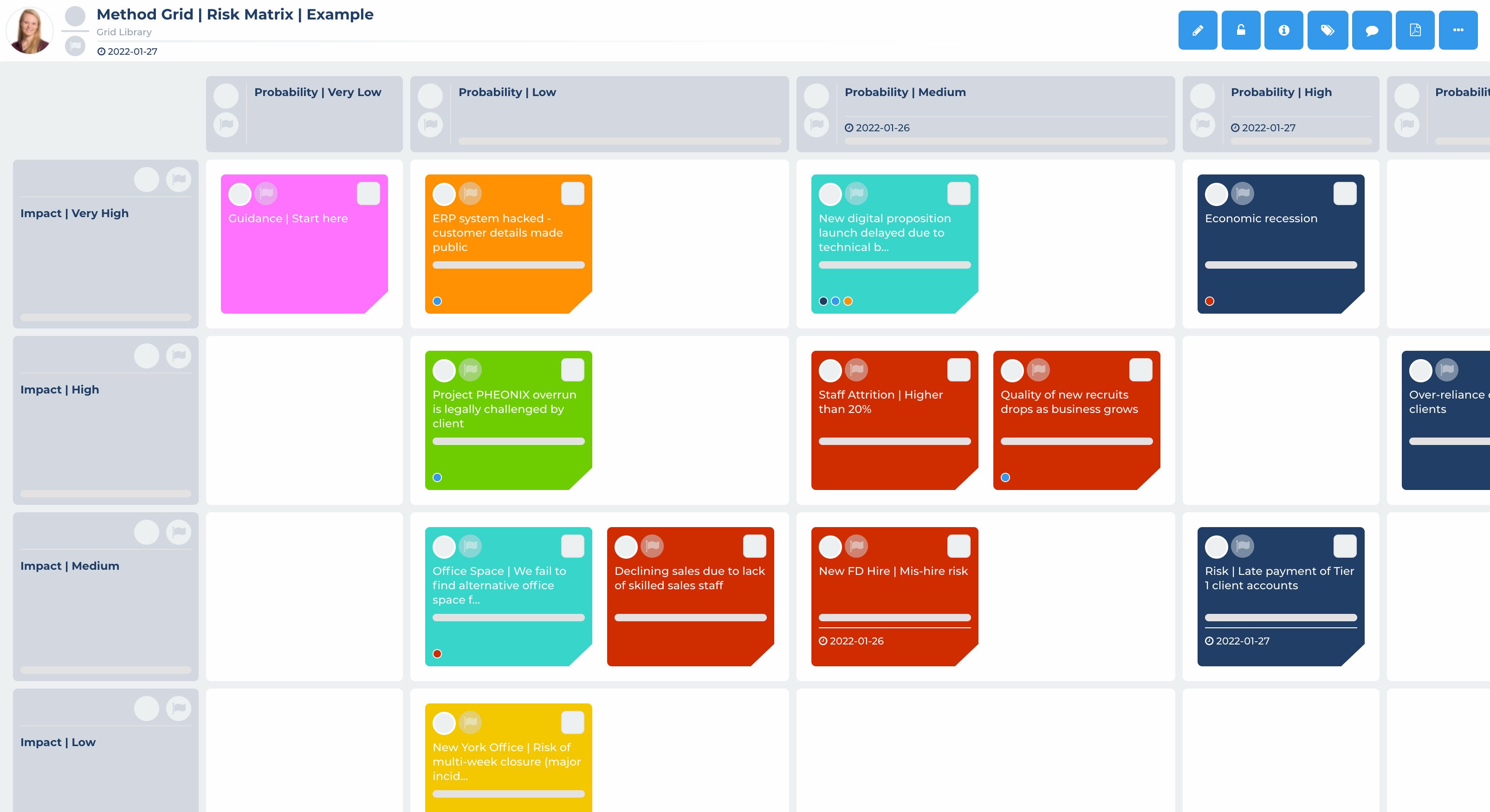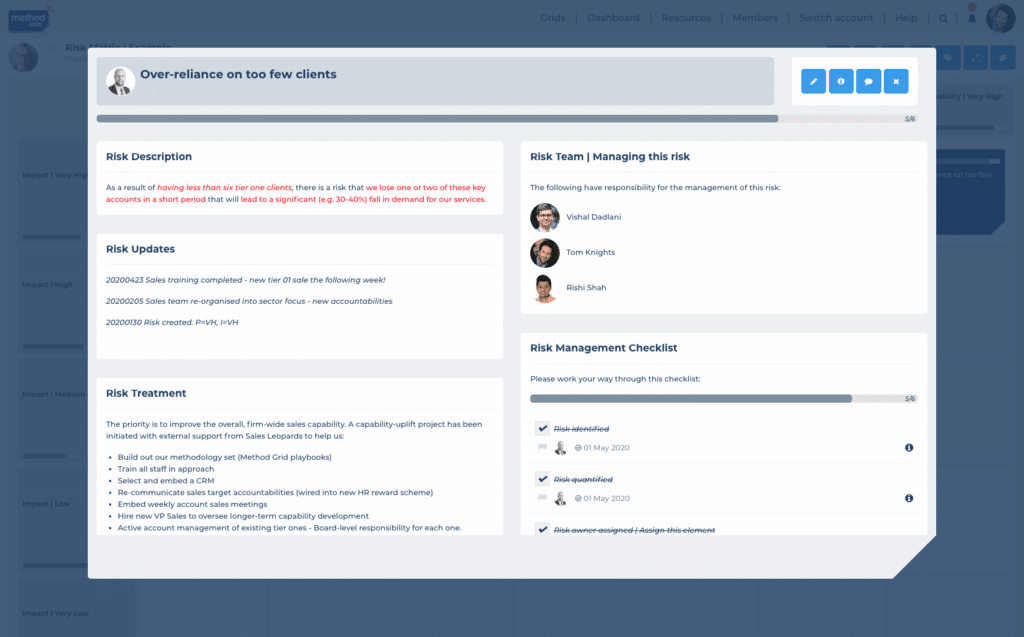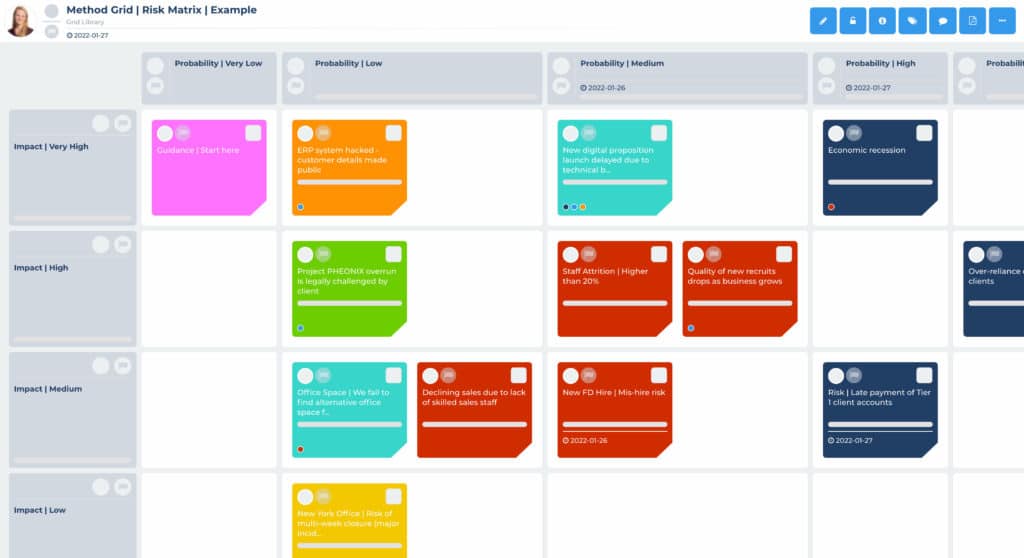Inspiration for this risk management matrix temple grid was triggered by discussion with Ed Watson – a Transformation Director at Equiniti (a FTSE250 professional user of Method Grid). You can see the full “Art of Gridding” blog which explores the risk management matrix topic with Ed in an “Art of Gridding” blog here.
Who might this risk management matrix be useful for?
The risk management matrix will be useful for a multitude of situations ranging from project and programme risk management (PMO teams, risk managers and project/programme leaders etc.) through to start-up, departmental and corporate board level application – for the proactive management of operational and strategic risk.
How is this risk matrix template best used?
As described in our accompanying “Art of Gridding” blog, this simple risk management matrix is designed to facilitate effective risk management conversations (for example, between members of a programme or corporate board team).
Risk elements can be dynamically dragged-and-dropped around the grid – as reflects their current status (the historical path of this track can be captured within the element itself). As such, this particular use of Method Grid is closer to a kanban-type application than the conventional application of left-to-right, phased methodology presentation. Such is the versatility of Method Grid!
The overall grid should be assigned an owner as befits best-practice (i.e. someone clearly assigned to the discipline of risk management) and each risk item, similarly, should be clearly assigned to a single, accountable lead (again, as highly correlate with best-practice).
Within each risk element, there are checklist tasks that guide teams through the risk management process – again these can be assigned and date-scheduled – along with content areas to capture all related information: risk description, risk treatment, risk updates, risk budget, risk proximity etc.
We would advise not to “crowd out” the grid – per our blog discussion – better to focus on doing this well with the most strategic items than poorly as a result of becoming disengaged with a burdensome list – especially so recognizing the finite capacity of busy, executive teams. This might be, for example, a maximum of 15 elements that get addressed and updated regularly.
Important also to note that this discipline can be replicated – and it should be – to also track, manage and nurture positive opportunities and chances to innovate. This is effectively just the same grid and process with a different, positive-looking skew applied.
What does this risk management matrix example consist of?
This risk management matrix grid is made up of the conventional probability * impact dimensions. The X axis (the grid stages/columns) track a risk item’s perceived probability. The Y axis (the grid themes/rows) track a risk item’s perceived impact.

An example element is provided as an illustrative risk item template i.e. this element can be replicated for each risk being actively managed.


 Project and Program Management
Project and Program Management  Project Governance Framework
Project Governance Framework  Benefits Management Framework
Benefits Management Framework 
